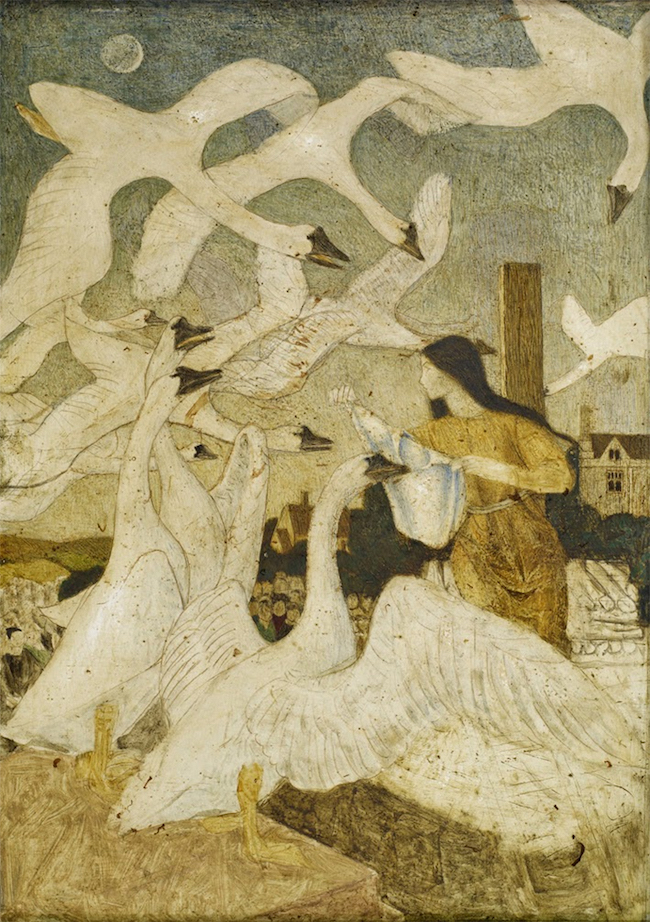“The Wild Swans” is a lesser-known (read: non-Disneyfied) fairy tale about a young woman who sacrifices years of her life toiling in silence to rescue her brothers from a sorcerous transformation.
The heroine’s six (or seven or twelve depending on the version—Hans Christian Andersen went with eleven in his well-known rendition) brothers are cursed by their stepmother and transformed into swans. The princess (or sometimes lord’s daughter, or some other personage of noble rank) is determined to rescue her siblings from their fate, and sets out to find them. Through a series of fairy-tale-esque coincidences she encounters them again, and they tell her that to break the curse; she must weave each of them a shirt out of star-flowers (or nettles, or a certain plant that grows only in the graveyard). She cannot speak or laugh until she breaks the curse, although in the meantime she marries, has two (or three) children, deals with a wicked mother-in-law, and is nearly burned to death as a witch (ahhh fairy tales—gotta love ‘em).
Rescue comes mutually from and for her brothers, and as she breaks the enchantment on them she is able to speak for herself at last and tell the tale. One brother is left with a swan’s wing in place of an arm, because the heroine was not quite able to finish her task before the deadline. (Come on, fairy tale…can’t we give working mothers more of a break? Though, interestingly, in none of the more modern versions below does the heroine become a mother before breaking the curse. Curious…)
Buy the Book
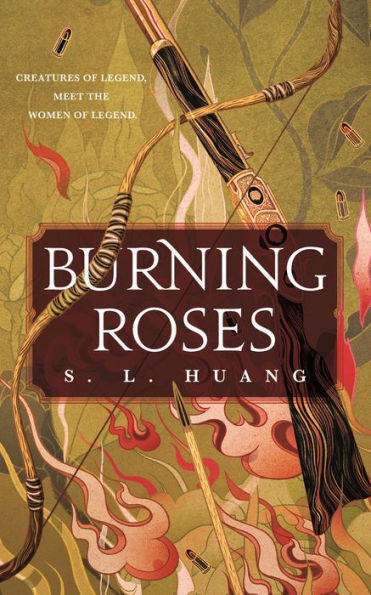

Burning Roses
It seems a powerful moment to consider this tale and the variations that it has inspired over the years. “The Wild Swans” is a lovely metaphor pointing us toward the unexpected ways one can make a difference in the world, even without having a “voice” in the traditional sense. It’s a story in which the heroine saves the day by not giving up, in which the act of sewing shirts—work that can be seen as traditionally feminine in many ways—is not only a heroic labor of love but the deed that ultimately rescues her brothers from their plight. Iterations of this story show that there are always ways of making yourself heard and effecting change in spite of obstacles, and that it’s possible to protect the people you care about through persistence and creativity.
So without further ado, here are five fascinating books and stories inspired by “The Wild Swans” which, like the original tale, should not be overlooked…
Daughter of the Forest by Juliet Marillier (2000)
“From the moment you leave this place till the moment of your brothers’ final return to humankind, no word must pass your lips, no cry, no song, no whisper must you utter…”
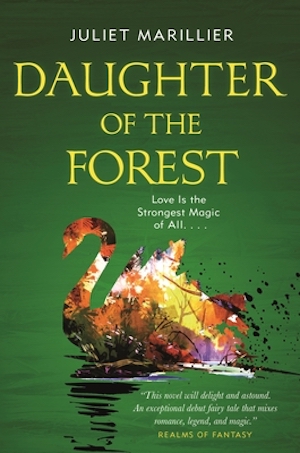
Marillier’s lush take on the tale delves deep into the implications of being voiceless, the complexities of sibling devotion, and of the politics and power plays that begin what turns into a six-book series. Sorcha is the youngest daughter of Lord Colum of Sevenwaters, and has been mostly raised by her beloved older brothers. When her father remarries and his new wife gives birth to a son, the enchantment plays out so that the new mother can rid her son of his rival half-siblings. Sorcha escapes, and although she tries to remain in isolation to work out the terms of the curse, she is first rescued from drowning, and then kidnapped by a British lord, Hugh of Harrowfield, who is convinced she knows about his missing brother. Their relationship is complex and satisfying, and without giving away the how of it, does not deviate too awfully far from the original fairy tale happily ever after.
The Sevenwaters series continues, following the saga of Sorcha’s family. Each book is its own fantastical tale, and though fairy-tale elements show up throughout the six novels, the first one is the most directly transposed from a traditional tale.
“My Swan Sister” by Katherine Vaz
(Collected in Swan Sister: Fairy Tales Retold by Ellen Datlow and Terri Windling, 2003)
“That’s part of a swan’s story, Jessica,” said my mother when she saw me worrying. “Swans disappear at night and perform bold deeds and must race back by daylight, panting.”
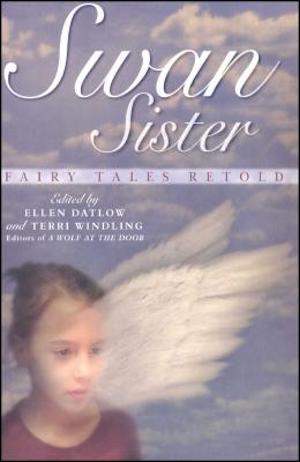
Although this collection is named for the protagonist of The Wild Swans, the rest of the stories within, apart from “My Swan Sister,” are based on an array of other fairy tales. Vaz’s “My Swan Sister” is a beautiful variation on the story, in which young Jessica’s baby sister is in the NICU. The roles are reversed here, because it’s the youngest daughter in peril, and big sister who is desperately knitting a winter sweater for her sister. Although the story has a more melancholy tone, it’s a celebration of life and the little moments that make life worth living.
“Swans” by Kelly Link
(Available from Fantasy Magazine, originally published in A Wolf at the Door and Other Retold Fairy Tales, edited by Ellen Datlow and Terry Windling, 2000)
This year I was failing choir. I opened my mouth to sing, and nothing came out. I hadn’t been able to say a word since my mother died. In my other classes, it was okay.
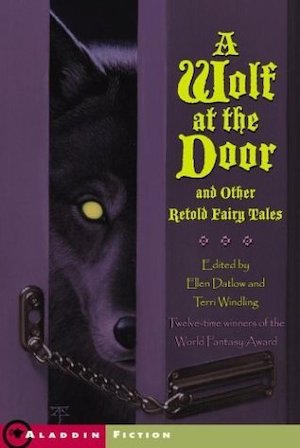
The incomparable Link weaves together a reimagining that is both classically a fairy tale and utterly modern. Emma is an eleven-year-old princess with a strange story to tell, revealed in a delightfully chaotic “How I Spent My Summer Vacation”-style narrative: she’s recently lost her mother, stopped talking, and lost all her school friends. And her stepmother turned her brothers into swans for being too noisy. While this variation doesn’t get as far through the original plot as some of the other works listed here, it does allows Emma more time to cope with her grief over the loss of her mother. It’s also more forgiving of the stepmother, who is strictly villainous in other versions. And in this retelling, Emma gets a fairy godfather, a cameo from another tale—you’ll never guess his name….
The Seventh Swan by Nicholas Stuart Gray (1962)
But at last I could speak, and I stepped between them and my brothers before any blood was spilled, and told them the truth.

Although the original story is recounted at the beginning of this book, the action here follows the youngest brother who was left with the swan wing at the end of the fairy tale. Gray actually developed the story as both a novel and a play (and I could not figure out which, if either, came first, since both are listed as having been completed in 1962). Alasdair struggles to readjust to life as a human, grieving the loss of his ability to fly, and without a sword arm to ease his transition. His sister, still worried for him, tries to find him a true love, but when he runs out on the girl in the middle of a dance, it becomes clear that things won’t resolve so easily. A tangle of enchantments and miscommunication lead the characters on a dizzying chase through the rest of the story, and the ending is both bittersweet and fitting, as a sequel to the original story should be.
The Wild Swans by Peg Kerr (1999)
Not until you say it aloud do you begin the fight, and until you start fighting, you don’t have a chance.
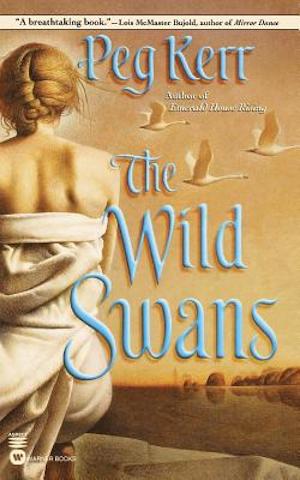
This version of the tale unfolds in two interwoven stories: an alternate history (Lady Eliza journeys to Puritan New England to work on breaking the curse) and a near-modern (1980s) tale about Elias, a young gay man who is banished from his father’s house. If you’re hesitant about the “modern” part of the book, preferring the more historical and fairy tale elements, not to worry: it reads like the best of Charles de Lint’s urban fantasies, though the magic is of a far more real and human nature. The parallels between the two stories soften hazily and then sharpen as sweetly as ripe strawberries, as both Eliza and Elias struggle to find their chosen family, rescue their loved ones, and break a curse they don’t understand. There is a powerful call to action here, to speak when you are able, and to never give up even when you cannot speak… The two stories reflect and echo one another other across time; each is compelling, but together they are breathtaking.
These are just five highlights out of many, so I hope you will offer other suggestions below. I should note that while working on this article I was not able to find any versions of this story that were written by authors of color, so if you know of any, please share in the comments!
Rachel Ayers lives in Alaska, where she writes cabaret shows, daydreams, and looks at mountains a lot. She has a degree in Library and Information Science which comes in handy at odd hours, and she shares speculative poetry and flash fiction (and cat pictures) at patreon.com/richlayers.










